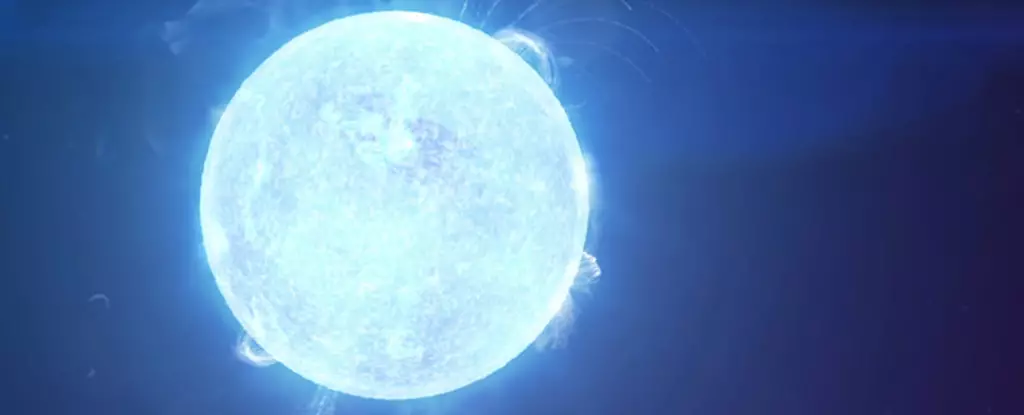When it comes to atoms, there are three key components: protons, neutrons, and electrons. While electrons are considered fundamental particles, protons and neutrons are composite particles made up of up and down quarks. Protons consist of two ups and one down quark, while neutrons have two downs and one up quark. However, due to the peculiar nature of the strong force, these quarks are always bound together and cannot exist as free particles like electrons, at least in the vacuum of empty space.
Neutron Stars: Remnants of Large Stars
Neutron stars are the remnants of massive stars. They serve as a last-ditch effort to prevent the collapse of a stellar core into a black hole. Once the nuclear fuel of a dense core has been exhausted, the only force capable of counteracting gravity is the quantum pressure exerted by neutrons. This is where things become intriguing. According to the simple model of a neutron star, its core is filled with neutrons that are on the verge of collapsing in on themselves. Although these neutrons may interact vigorously with each other, they still remain neutrons. The quarks within them are bound too tightly for the neutrons to break apart.
However, some theorists have put forth the idea that at the gravitational edge of a neutron star, the neutrons could undergo a transformation. They propose that the neutrons can loosen up, allowing their quarks to merge and form a “quark soup.” This would imply the presence of a dense quark core within neutron stars. Unfortunately, conducting experiments on neutron stars or creating the same conditions of a neutron star’s core on Earth is not currently feasible. Nonetheless, we do have some understanding of how dense nuclear matter behaves through the use of an equation known as the Tolman-Oppenheimer-Volkoff (TOV) equation.
The Complexity of the TOV Equation
The TOV equation serves as a method for calculating the bulk properties of a material. In the case of neutron stars, it enables us to determine their equation of state. However, the TOV equation is highly complex. Using it to calculate whether neutron stars possess a quark core yields ambiguous results. The answer it provides is uncertain, leaving us with a sense of ambiguity regarding the existence of quark cores in neutron stars.
A New Approach: Bayesian Statistics
To tackle this conundrum, a recent study took a different approach. Instead of relying solely on equation of state calculations, the researchers utilized observational data on the mass and size of neutron stars and applied Bayesian statistics. Bayesian statistics is a statistical method that analyzes patterns of observation and extrapolates likely scenarios in a nuanced yet powerful manner. In this particular study, the researchers aimed to identify a potential shift in the mass-density relation between neutron stars with and without quark cores.
The team’s findings indicate that massive neutron stars, those with masses greater than two Suns, have an 80 – 90 percent likelihood of containing quark cores. These results suggest that the real question lies not in the existence of quark stars but rather in locating the precise transition point between quark stars and regular neutron stars. However, it is important to note that this analysis relied on a relatively small data sample. Currently, we lack information regarding both the mass and radius of the majority of neutron stars. Nevertheless, as our data collection improves over time, we can expect to gain a deeper understanding and pinpoint the critical phase shift between quark matter and dense neutron matter.
While the concept of quark cores within neutron stars remains enigmatic, recent advances in observational data and statistical analysis have provided intriguing insights. We now have reason to believe that certain neutron stars are far more peculiar than we originally envisioned. As our knowledge continues to expand, we may eventually uncover the true nature of these enigmatic cosmic entities.



Leave a Reply